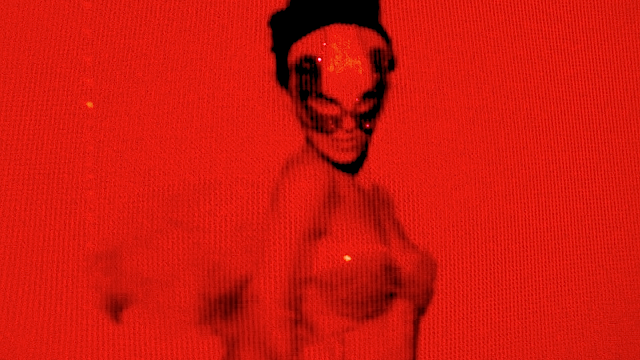ZIGEUNERLIEDER. Teatro Lirico Sperimentale "A.Belli". Spoleto
OPERALIEDER, ZIGEUNERLIEDER
Music by E. Grieg, D. Šostakovic, J. Brahms, A. Dvorák and R. Schumann
Pianist: Andrea Barbato
Director and videomaker: Lisa Nava
Light designer: Eva Bruno
Singers: Zdislava Bocková, Emanuel Bussaglia, Alessandro Fiocchetti, Daniela Nineva e Susanna Wolff
Actor: Tommado Minniti
A production of Teatro Lirico Sperimentale di Spoleto "A.Belli"
Villa Redenta. Spoleto
Operalieder 2018
Press:
“OPERALIEDER, ZIGEUNERLIEDER - THE GYPSY SONGS IN SPOLETO
In this last week dedicated to the Opera Season, the Villa Redenta ensemble hosted on Wednesday 19
September, "Operalieder, Zigeunerlieder" (Canti Zigani). The protagonists were the solo singers of the Teatro Lirico Sperimentale Zdislava Bocková, Emanuel Bussaglia, Alessandro Fiocchetti, Daniela Nineva and Susanna Wolff, accompanied on the piano by Andrea Barbato, who interpreted pieces by D. Šostakovic, J. Brahms, A. Dvorák and R. Schumann .
The direction is entrusted to Lisa Nava, of the same are the videos projected behind the singers, which reproduce images of nature in its continuous becoming, just like the gypsies in constant movement. This link is also underlined by Franz Listz in the text “Gli Zigani”, from which the passages recited by Tommaso Minniti are taken. In reality, despite the title of the work, authentic elements belonging to the gypsy folklore are absent in these songs, while the traditions of 19th and 20th century Europe emerge in the compositional interpretations of the geographical area of reference. For example Grieg, who uses texts dealing with natural elements, combines unusual harmonies with a modal language typical of the Nordic tradition. Brahms in his “Acht Zigeunerlieder” op. 103, on the other hand, music is a collection of Hungarian love songs drawing on compositional expedients typical of Eastern European repertoires: binary rhythm, syncopes and accentuation methods. On the other hand, Dvorak, in the two "Ciganskè" melodies of op. 55 based on texts by the Czech poet Adolf Heyduk, adopts Slavic and Bohemian melodies that bring out the linear aspect compared to the vertical one. In op. 29 of Shumann's "Zigeunerleben" on the lines of Emanuel Geibel, the exotic is only a suggestion and therefore even further away from authenticity. As well as Sostakovic who in his “Gesange nach Hebraische Volksdichtungen”, puts into music texts of Hebrew folk songs separated from the original accompaniments.
These songs symbolize how gypsy music has exerted an indisputable fascination even among classical composers, a fascination that has remained intact to this day.
- By Michela Bruschini
“OPERALIEDER, ZIGEUNERLIEDER – I CANTI ZINGANI A SPOLETO
In quest’ultima settimana dedicata alla Stagione Lirica, il complesso di Villa Redenta ha accolto mercoledì 19 settembre, “Operalieder, Zigeunerlieder” (Canti Zigani). Protagonisti i cantanti solisti del Teatro Lirico Sperimentale Zdislava Bocková, Emanuel Bussaglia, Alessandro Fiocchetti, Daniela Nineva e Susanna Wolff, accompagnati al piano da Andrea Barbato, che hanno interpretato brani di D. Šostakovic, J. Brahms, A. Dvorák e R. Schumann.
La regia è affidata a Lisa Nava, della stessa sono i video proiettati alle spalle dei cantanti, che riproducono immagini della natura nel suo continuo divenire, proprio come gli zigani in perenne movimento. Questo legame è sottolineato anche da Franz Listz nel testo “Gli Zigani”, da cui sono tratti i brani recitati da Tommaso Minniti. In realtà, nonostante il titolo dell’opera, in questi canti sono assenti autentici elementi appartenenti al folklore zigano, emergono invece le tradizioni dell’Europa dell’800 e del ‘900 le interpretazioni compositive della zona geografica di riferimento. Ad esempio Grieg, che utilizza testi che trattano elementi naturali, unisce armonie inusuali a un linguaggio modale tipico della tradizione nordica. Brahms nei suoi “Acht Zigeunerlieder” op. 103, invece, musica una raccolta di canti d’amore ungheresi attingendo ad espedienti compositivi tipici dei repertori est europei: il ritmo binario, le sincopi e le modalità accentuative. Di contro Dvorak, nelle due “Ciganskè” melodie dell’op. 55 su testi del poeta ceco Adolf Heyduk, adotta melodie slave e boeme che fanno risaltare l’aspetto lineare rispetto a quello verticale. Nell’op. 29 di “Zigeunerleben” di Shumann sui versi di Emanuel Geibel, l’esotico è solo una suggestione e quindi ancor più lontano da un’autenticità. Così come Sostakovic che nei suoi “Gesange nach Hebraische Volksdichtungen”, mette in musica testi di canzoni popolari ebraiche separati dagli originali accompagnamenti.
Questa canti simboleggiano come la musica zigana abbia esercitato un fascino indiscutibile anche tra i compositori classici, fascino rimasto intatto fino ai nostri giorni.
- By Michela Bruschini






Comments
Post a Comment